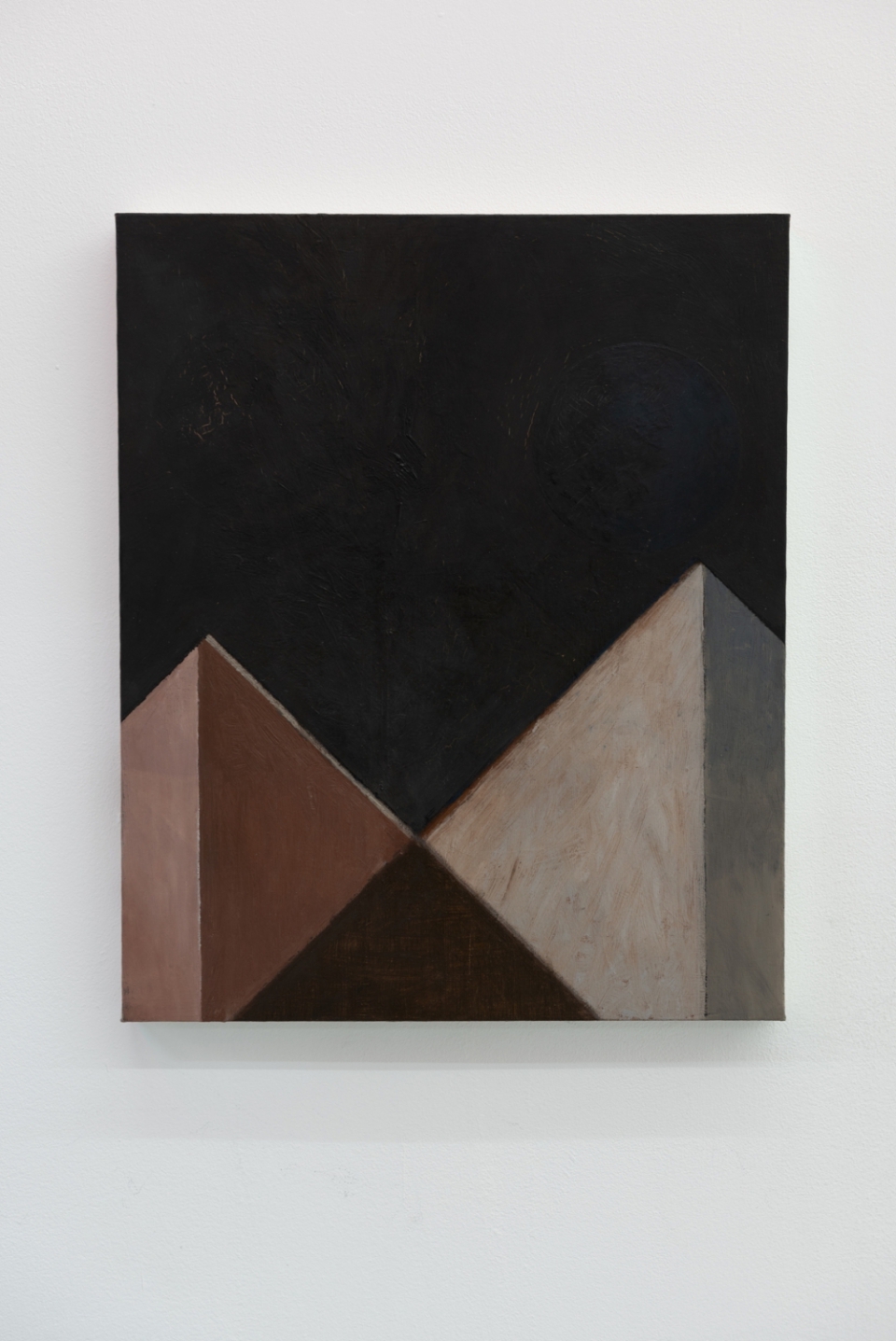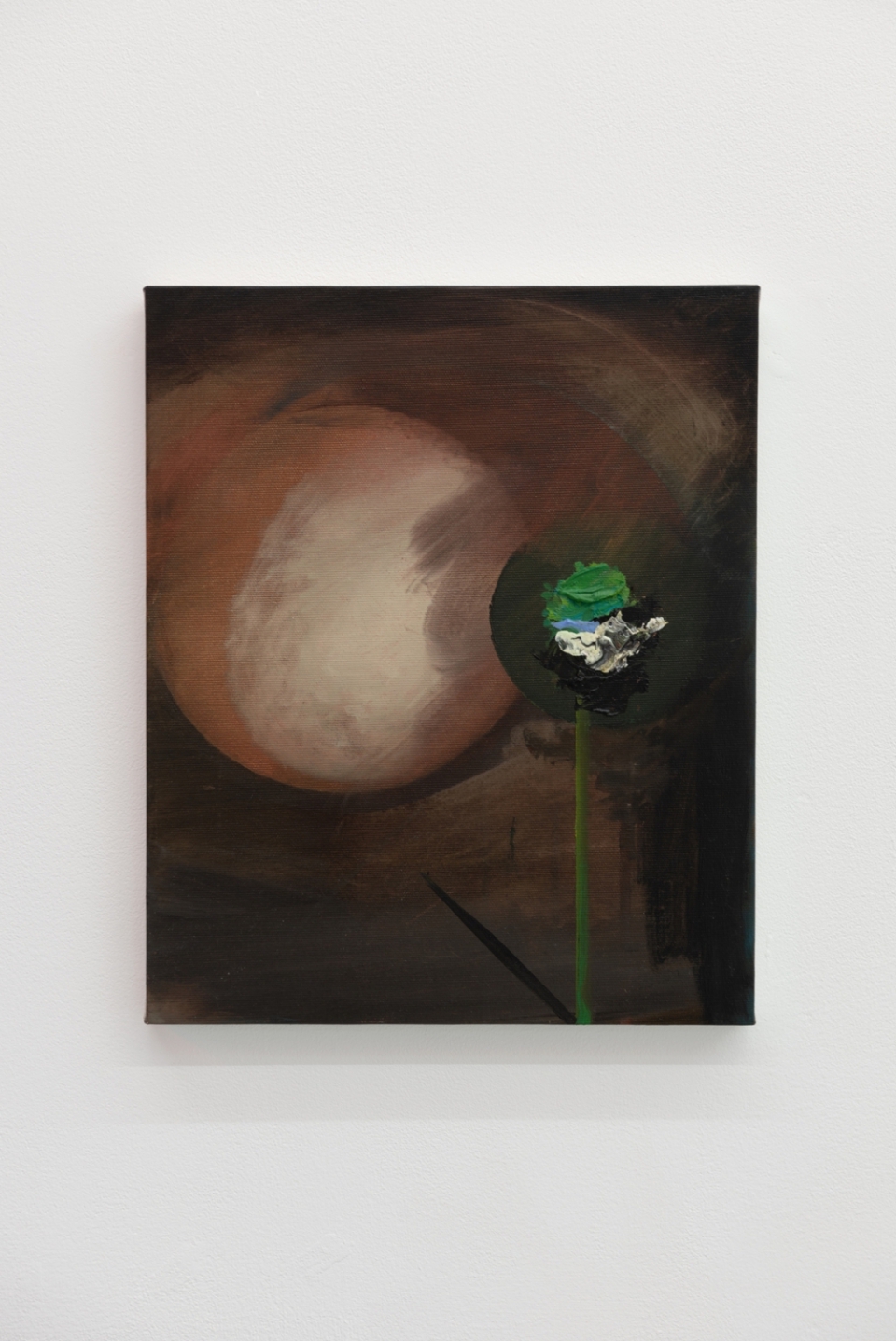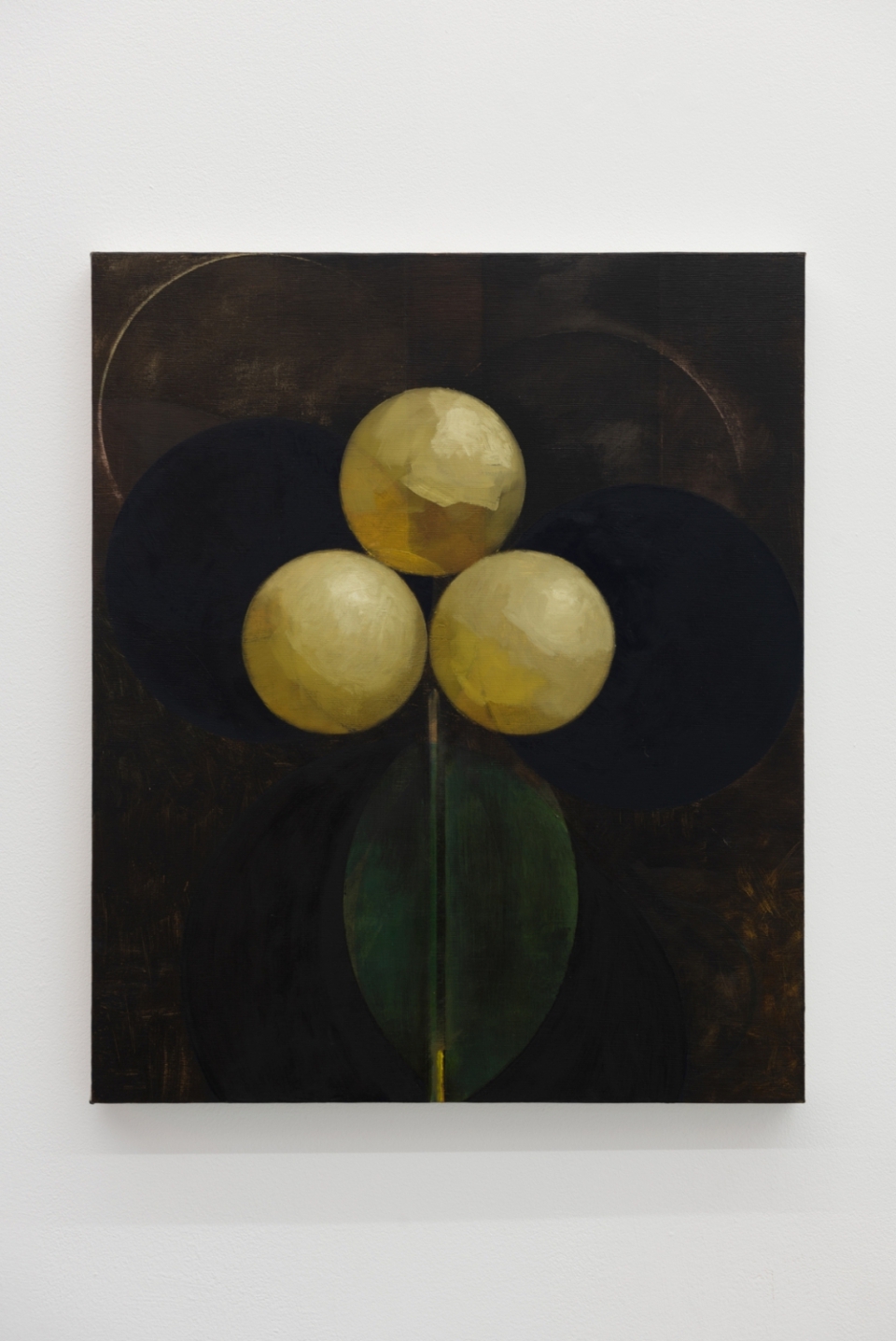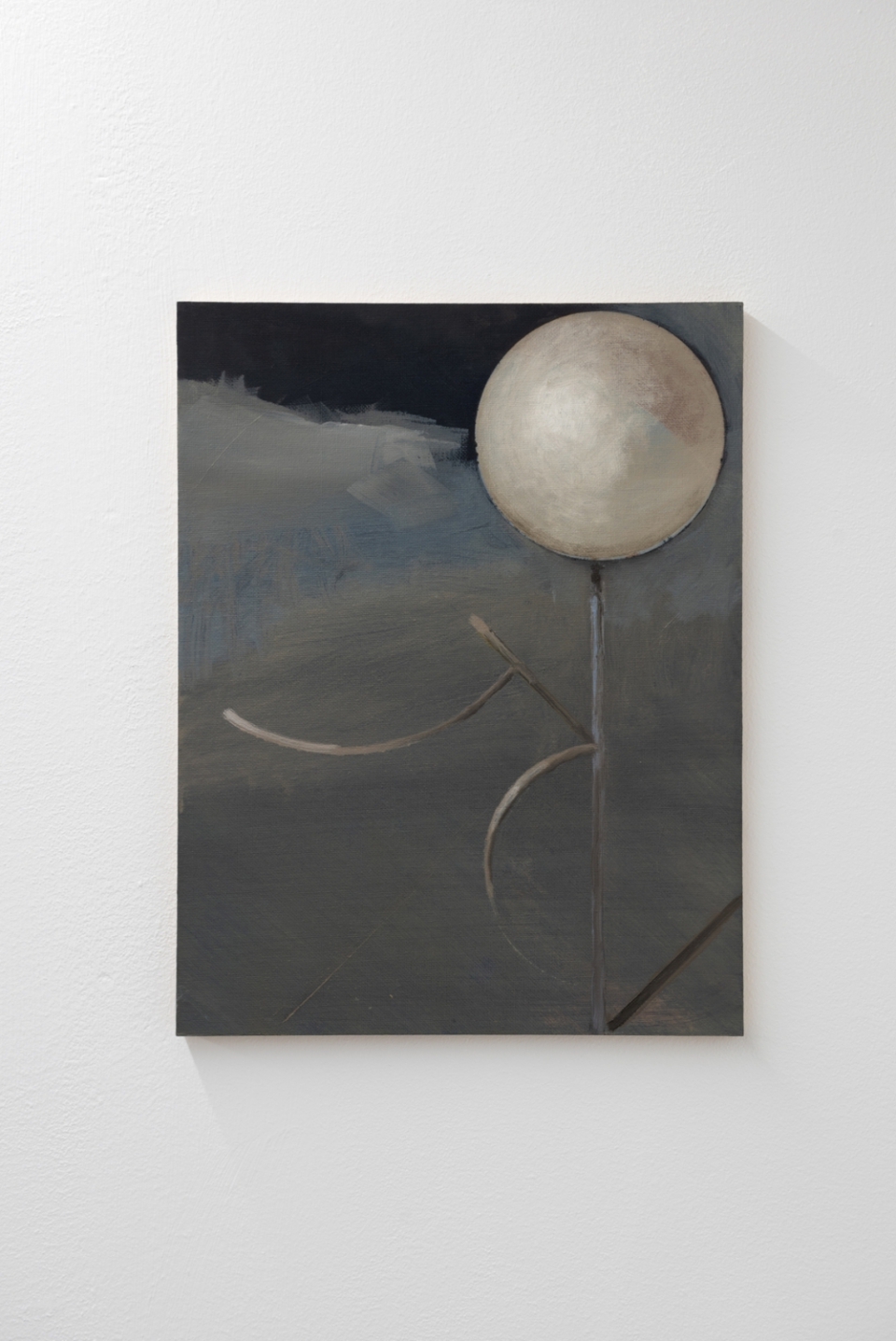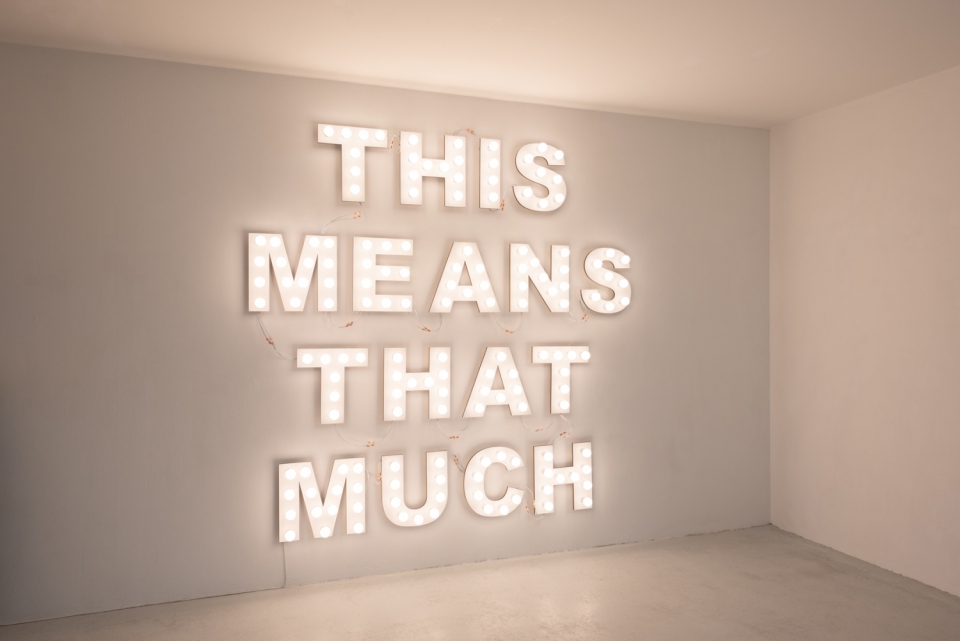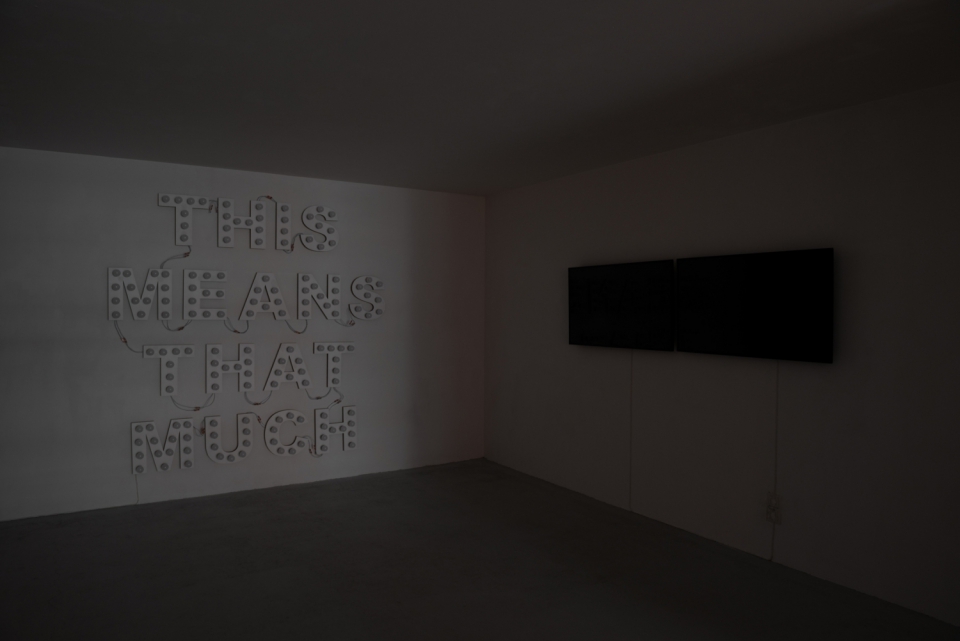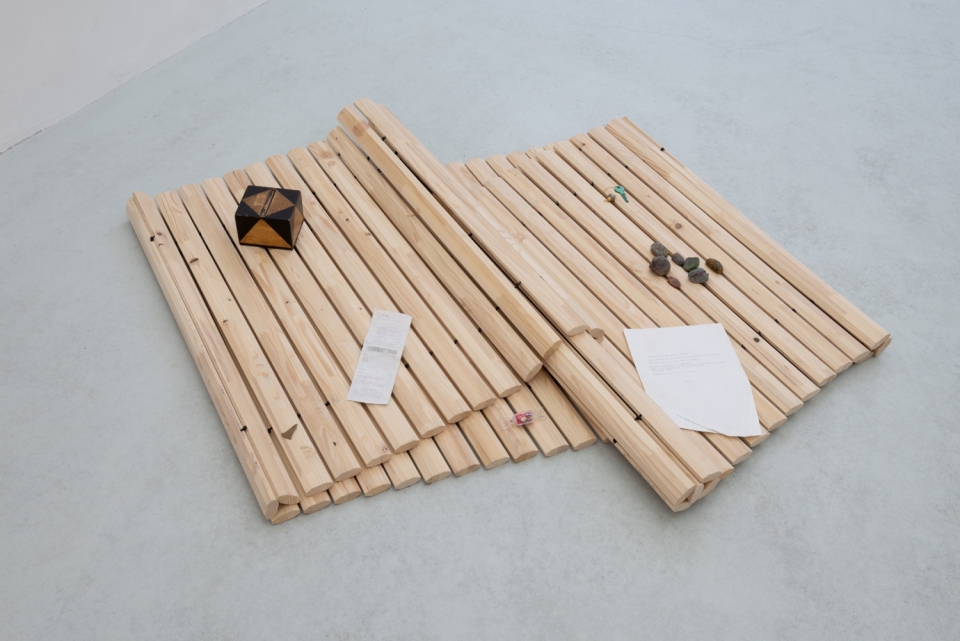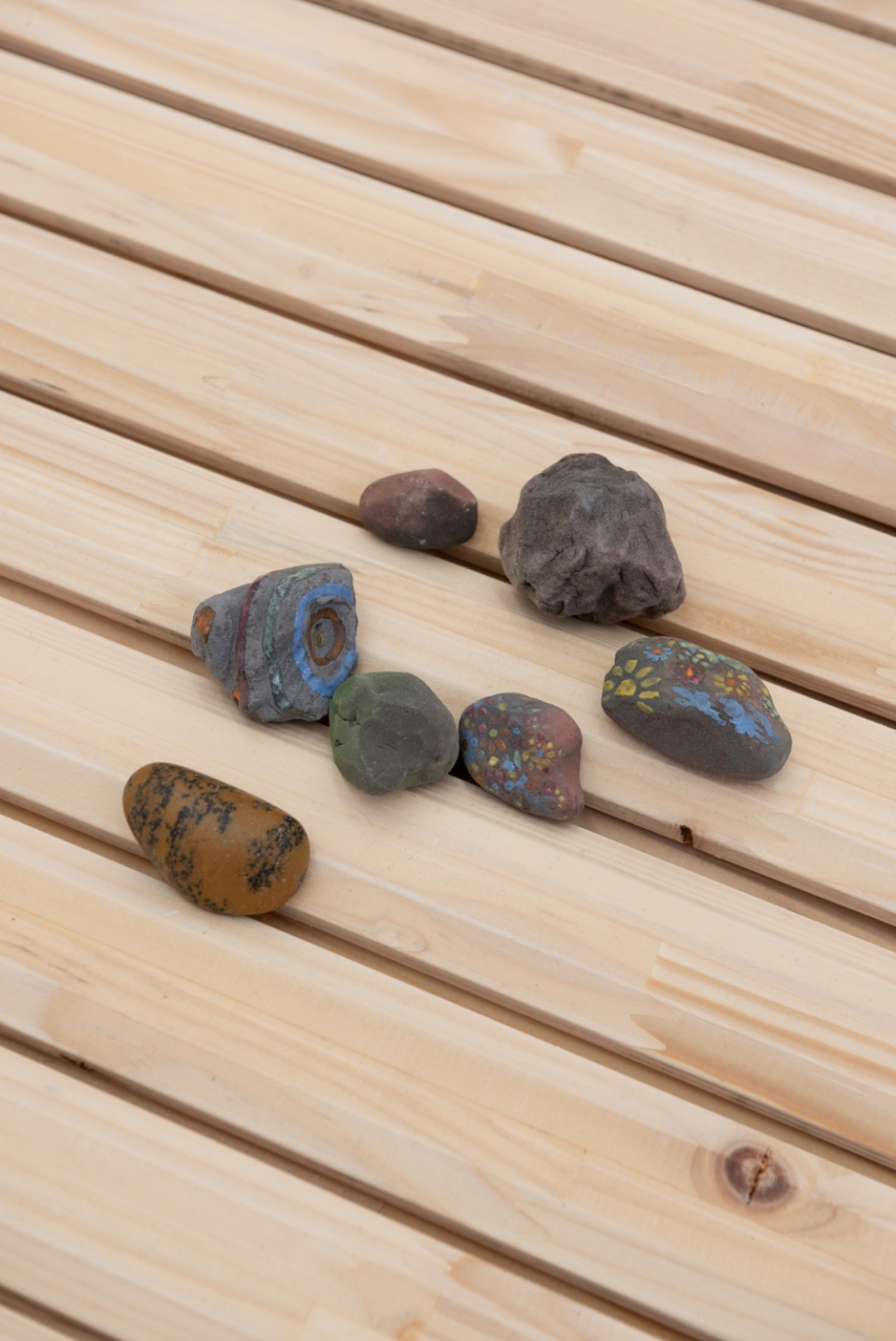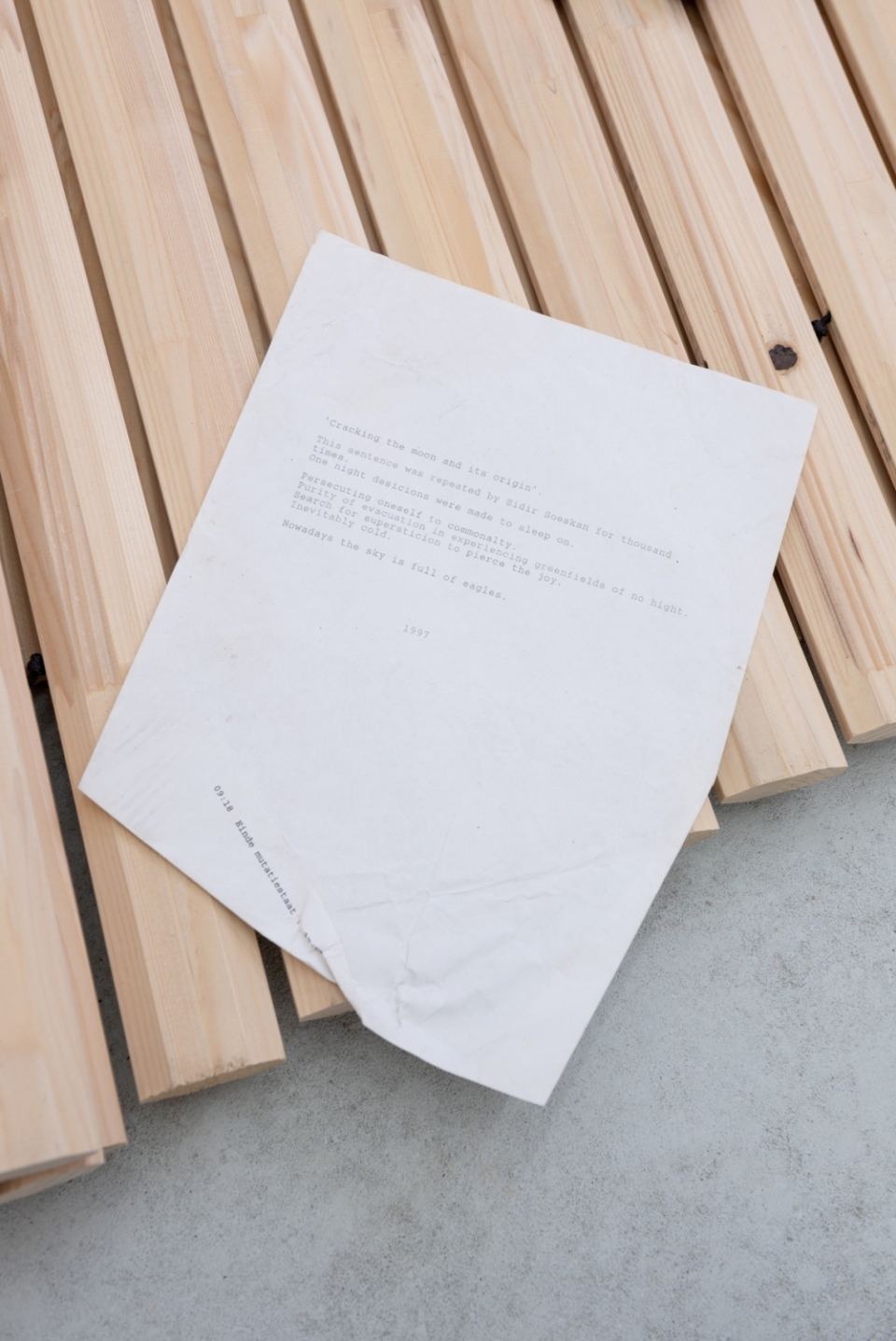Part 1: Survival of the Fittest: the big toe of little big man
26.11.2021, 18:00 – 21:00
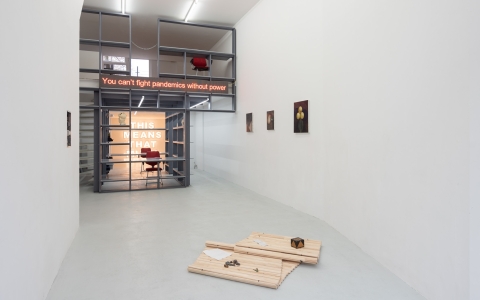

Exhibition view Part 1: Survival of the Fittest: the big toe of little big man, November 2021, Rib. Photo: Lotte Stekelenburg
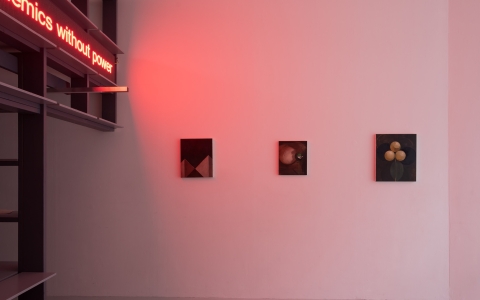

Mathew Kneebone, Power Relations (detail), 2021 in scenography by Olivier Goethals and paintings by Shahin Afrassiabi. Photo: Lotte Stekelenburg
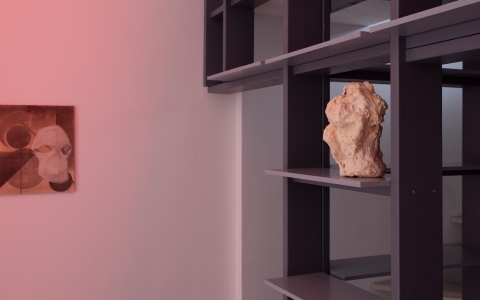

Shahin Afrassiabi, Tronie (Thomas Houseago), 2021 (left) and Many heads, 2021 (right) in scenography by Olivier Goethals. Photo: Lotte Stekelenburg
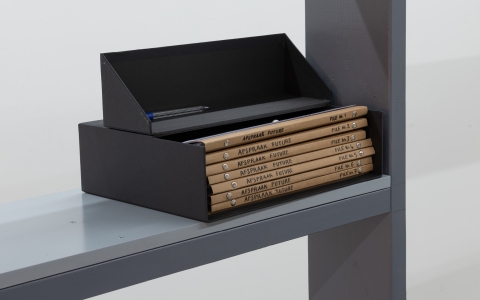

Eléonore Pano-Zavaroni, Afspraak Future, 2021. Photo: Lotte Stekelenburg
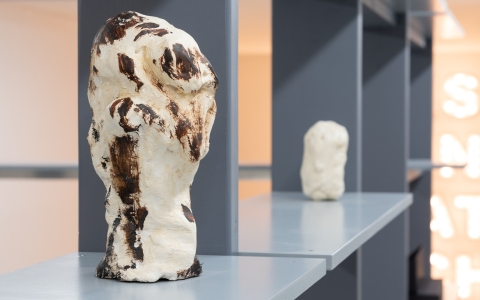

Shahin Afrassiabi, Head of a young man, 2021. Photo: Lotte Stekelenburg
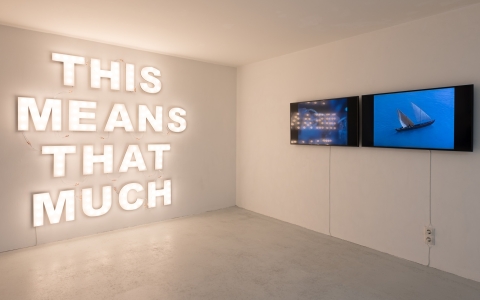

Marije de Wit, This Means That Much, 2021. Photo: Lotte Stekelenburg
With works by Marije de Wit, Shahin Afrassiabi and Eleonore Pano-Zavaroni inviting Romain Bobichon, Fabrice Croux, Danaé Jérome, Ash Kilmartin, Akim Pasquet, Jérôme Tillié and Maziar Afrassiabi.
In the last few weeks, we experienced Mathew Kneebone’s work, Power Relations, which together with Olivier Goethals’ scenography, introduced the program as a liminal space. Kneebone’s news headlines followed more or less daily and will continue for the unforeseeable future. Premonitions of a coming, significantly catastrophic event in California and isolated from their local news context. With their dream logic language, they are poetic anticipations of what is yet to happen: Rib will imminently switch off. Connection between two places is established through disconnection.
Being connected to all counties in California, we had two blackouts occurring in the space last month, due to storms, floods, and mismanagement, that forced us to wear warm clothes and to charge our batteries before we entered Rib; to light candles that coincidentally helped us mourn the dead. Neighbors complained that they can’t sleep because of the bright lights in the space reaching their bedrooms, because when the power returned we were not there to switch the lights off. During the blackouts works on display were turned off and the black screen of the monitors displayed the reflection of a wanting visitor, instead of the source material: the films of Albert Lamorisse.
Head of a young man
In a recent conversation with Shahin Afrassiabi he talked about his fascination with the distinction between the allegorical method of interpretation versus the literal one originally related to the hermeneutics of the bible and had speculated about the way this distinction relates to his own painting and sculpture.
In his paintings, the same figures, such as circles, spheres, vertical lines, reappear in different constellations each time depicting different real-world things. The repetition of these forms is a constant reminder of the paintings' hard reality as object and surface yet they also seduce one into an emotional flirt with invented spaces and objects. Mountains, faces, flowers, dark moods, colors, surface textures, degrees of depth, and shadows are weirdly both present and absent; the surface and the image equally inhabit the work complicating hierarchical distinctions between subject and object. The plaster head sculptures are also all variations of a certain inarticulate head. Inarticulate in so far as they approximate a head but never quite fully concretize its specifics.
This Means That Much
Marije de Wit speculates in her work what an image or a sculpture can be today in terms of its autonomy, functionality, or decorativity. Traditional understandings and categories, that enable her to not only look at the fundamentals of sculpture and image less statically but also to question the self-evidence of our surrounding world in how we come to define and value things. The dominance of quantification and objectification in art and life underlies her motivation to reclaim space for subjectivity and ambiguity. For things to have the right to exist and to have validity prior to their explanation. In recent years she has been exploring the relationship between art and critique in creative writing, art writing, and criticism by poets, artists, critics, and other thinkers.
For The Last Terminal, she has made a site-specific work that as she put it, ‘calls for the safeguarding of the inexplicable’, a light work that is also subject to the whims of Mathew Kneebone’s intervention Power Relations titled: This Means That Much. She also has compiled a carefully selected number of paragraphs from her collection of readings, into a reader that reacts to the ideas that have gone into the program as a whole.
Afspraak Future
Eléonore Pano-Zavaroni presents a work, that is an enhanced version of her Afspraak piece from 2019 at Rib, still a collaborative tool, yet only targeting those who express their full commitment to its cause as if their life depended on it. The general public is then a witness to these intense exchanges until they decide to leave the realm of spectatorship and come closer. Afspraak Future: About some magical virtues includes contributions by seven artists that Zavaroni hand-picked and invited, whose contributions she describes as ‘things-of-unstable-status’, for which she has made a foldable/unfoldable placeholder she calls the flying carpet, referring to a scene from the movie The Lover’s Wind from the French film director Albert Lamorisse. In this scene, Lamorisse’s unseen helicopter personifying the lover’s wind blows and scatters Persian carpets on a hill that are laid out by locals to be washed and dried.
The artists invited by Pano-Zavaroni are Romain Bobichon, Fabrice Croux, Danaé Jérome, Ash Kilmartin, Akim Pasquet, Jérôme Tillié and Maziar Afrassiabi.
Shahin Afrassiabi was born in Tehran. He studied art at Goldsmiths University in London. He works in Andalucia, Spain. Selected solo exhibitions include Paintings 2016–2018 at Soy Capitán, Berlin (2018), Radical Substance at Soy Capitán, Berlin (2015), Theory of Life at MOT International, London (2012), Subject to Form at Limoncello Gallery, London (2010). Afrassiabi’s work was part of several group shows, such as Been Caught Stealing at Kunsthalle Exnergasse, Vienna (2014), Showcase Preview at South London Gallery, London (2004), Transmission Gallery, Glasgow (2002), Early One Morning, Whitechapel Gallery, London (2002), and ICA, London (2000).
Olivier Goethals studied Architecture and Urban Development. He is working simultaneously as architect and artist. In his wide practice he researches the connection between space and consciousness. Olivier made spatial interventions and artistic installations for venues, such as Het Nieuwe Instituut Rotterdam, Z33 Hasselt, Extra City Antwerp, Be-Part Waregem, SMAK Ghent & Palais De Tokyo Paris. Previously he worked as a freelance senior architect for De Vylder Vinck Taillieu (2008–2016). Since 2010, he is teaching at the KULeuven Architecture Department. He was a guest critic at RU Ghent faculty of Architecture, LUCA School of Arts Experimental Studio and ETH Zurich faculty of Architecture. Goethals is in charge of the design and implementation of all spatial interventions for the art collective 019.
Mathew Kneebone’s practice is founded on research into uncertainties surrounding technology, often combining different histories, myths, and folklore. His work touches upon various media including drawing, electronics, writing, sound, and performance to reconfigure or re-contextualize certain technologies, exploring an ambivalent blend of past and present. His work has recently been exhibited at Kunstverein, Amsterdam; 019, Ghent; Extra City, Antwerp; and Cloaca Projects, San Francisco. His writing has been published in Trigger Magazine, OASE Journal for Architecture, The Bulletins of The Serving Library, Another World, Umwelten, among others. He has given talks and workshops at Minnesota Street Project, San Francisco; V2_ Lab for Unstable Media, Rotterdam; Central Saint Martins, London; Sandberg Instituut, Amsterdam; San Serriffe, Amsterdam; EKA Gallery, Tallinn; Sitterwerk, St. Gallen; UEL, London. He teaches at California College of The Arts, San Francisco, where he is thesis writing supervisor.
Marije de Wit lives and works in Rotterdam. A selection of her recent activities are: artist talk in the context of artist in context, Netherlands Film Academy, Amsterdam; There Is So Much Thinking to Be Done, Wiels Project Space, Brussels; site-specific photo installation, Clermont-Ferrand (FR), thanks to Artistes en residence; and ESACM, VERY|BODY|TIME, edition of 25 posters, spread over free pasting places in Rotterdam.
Éléonore Pano-Zavaroni teaches art and art history at Esaaa (Annecy Alpes School of Art). She runs the art platform 5OU6ÎLES and the magazine Idoine and is one of the members of the scientific committee of the biennial Carbone, Saint-Etienne. Some of her exhibitions are Living Fair with Nayoung Kim, Changnyeong Bugok Spadium, South Korea (2019), Rendez-vous La Havane in Centro de arte Wifredo Lam, Cuba (2018) and Rendez-vous/Biennale de Lyon, Institut d’art contemporain, Villeurbanne (2017). She curated Eutrapelia, Back Lane West, Redruth, UK (2018) and published the monographic edition Entretien, Martial Déflacieux, Éléonore Pano-Zavaroni, Virginie Bobin, Stéphane Sauzedde, Esaaa éditions (2017). She is currently preparing a solo exhibition for next year at the Flaine Art Center and an artist’s book Rendez-vous.
Pano-Zavaroni has invited the following artists. In her words:
“Danaé Jérôme is a goddess who speaks cat. She is the intensity of the present. She radiates and connects. She presents herself as a designer or an artist, depending on the context and the person she is talking to. She acts, with no sense of hierarchy between situations. Fully there. Fully with—whether in a neighbourhood knitting association, a textile design project, or an art residency.
Anchored in the cosmos, Jérôme Tillié makes experimental music, original graphic design, unexpected exhibitions, the reception of a hotel. He has a sense of display and presentation that is as sensitive as it is subversive in its sincerity. This is beauty. In Jérôme Tillié‘s sentences, words appear where we least expect them and vice versa.
When I met Akim Pasquet, he was looking for ways to extract energy from stones. I then discovered his strength in creating art spaces where everyone is welcomed and finds their place. He federates and explores, driven by questions of affect and energy, their circulation in intimacies and in ensembles. He is a curator, artist, teacher and director of the Limbes art space and the Carbone Biennial.
Fabrice Croux, attentive, makes piles, stacks. He states that art is to increase the sensitive and understand in a non-verbal way. He eats things, techniques, and other edible foods. He bathes in time, sprinkled with magic and strangeness, making objects that are other.
Romain Bobichon has an experimental painting practice. I often have the impression that he creates an infinite painting that develops in many dimensions. It is a relationship to the world rather than a medium. He produces things that can be manipulated, things that can be thought of with the body. Moreover, he also makes music or, with other acolytes, a series of fiction.
Ash Kilmartin does a lot of collaborations; she has a sense of staging and dramaturgy. She is a storyteller, sculptor, performer, radio broadcaster, gardener, chef, and runs Life.
Maziar Afrassiabi is an artist, he makes poems in spite of himself, is attentive to dreams. He unfolds an artistic practice, and a way of thinking with others, through his curatorial practice, mainly at Rib, which he founded and directs. For some time now he has been making beautiful sculptures, between the Merzbau and Valentine Schlegel.”



